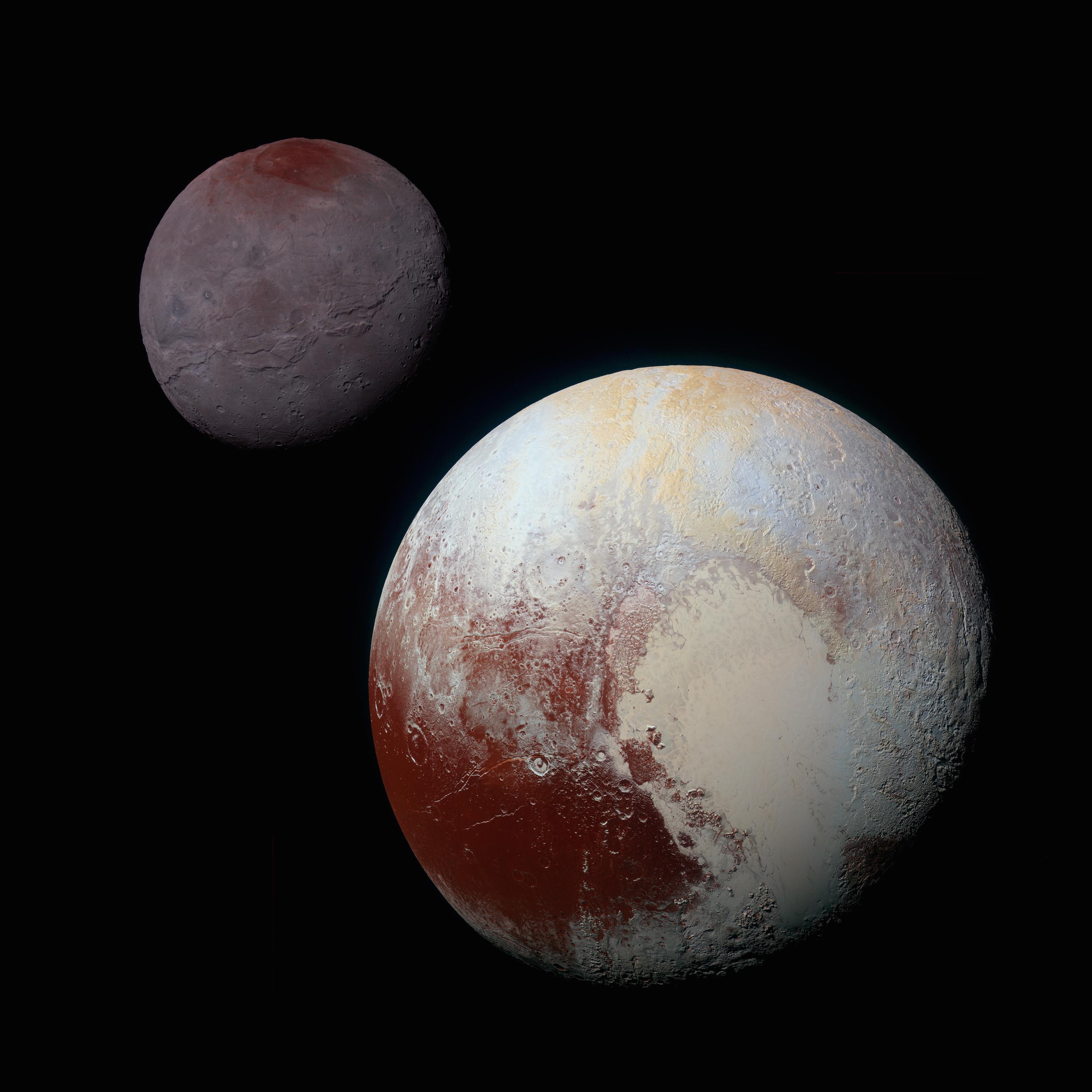Scientists Simulate Pluto–Charon Satellite System on NCCS Discover Supercomputer

A composite of enhanced color images of Pluto (lower right) and Charon (upper left), taken by NASA's New Horizons spacecraft on July 14, 2015. Image by NASA/Johns Hopkins University Applied Physics Laboratory (JHUAPL)/Southwest Research Institute (SwRI).
Unique in our solar system, Pluto and its largest moon Charon (nearly half Pluto’s size) orbit around a common center of gravity. Four known smaller moons, or satellites, orbit around these two dwarf planets in what scientists call a circumbinary satellite system.
When NASA’s New Horizons spacecraft visited this distant system in 2015, it failed to detect any new satellites during its 6-month-long flyby. Scott Kenyon, Smithsonian Astrophysical Observatory, and Benjamin Bromley, University of Utah, “wanted to know whether the dynamics precluded other satellites or whether possible satellites were simply below the New Horizons detection limit,” Kenyon said.
For answers Kenyon and Bromley turned to the NASA Center for Climate Simulation (NCCS) Discover supercomputer, which hosted their simulations of the Pluto–Charon circumbinary satellite system investigating the possibility of new satellites in addition to Styx, Nix, Kerberos, and Hydra.

A composite image showing a sliver of Pluto's large moon, Charon, and all four of Pluto's small moons, as resolved by New Horizons’ Long Range Reconnaissance Imager (LORRI). Image Credit: NASA/JHUAPL/SwRI
Kenyon and Bromley ran 275 separate simulations with their Orchestra n-body code to track the orbits of massive satellites and more than 10,000 massless tracers. The simulations covered periods ranging from 10 million to 300 million years.
The simulations included single-core runs, taking up to several months, and 56-core runs, typically finishing in one to two weeks. They consumed a total of approximately 350,000 core-hours on Discover.
The NCCS support team helped the researchers set up Portable Distributed Scripts (PoDS), which was essential for organizing the large number of runs. They also assisted with general issues and suggested Discover’s 24-hour queue for faster access.
The calculations show that there is little room for stable satellites in between the orbit of the innermost satellite, Styx, and the outermost satellite, Hydra. Small, stable satellites could exist in a small region inside Styx’s orbit or in a much larger volume outside Hydra’s orbit.
A movie following 10 million years of dynamical evolution as simulated on the NCCS Discover supercomputer. The simulation tracks Pluto–Charon (large white dots), the four small satellites (orange dots), and surviving massless tracers (small purple dots). By the movie’s conclusion, most survivors lie just inside the orbit of Styx (inner left) or outside the orbit of Hydra (outer left). Several tracers orbit within the corotation zones of Nix (inner right) or Hydra. Visualization by S.J. Kenyon and B.C. Bromley.
These results help to interpret data from the New Horizons mission, identifying a large volume of space not probed by New Horizons where unknown satellites could exist. The analysis also shows that future James Webb Space Telescope imaging observations could detect satellites with radii smaller than New Horizons’ 2–3 kilometer limit.
“Access to NASA supercomputing resources allows us to probe the complex physical processes involved with the formation and evolution of planetary systems,” Kenyon said. “Without these resources, these problems are simply intractable. On the NASA Discover system, we can investigate outcomes of billions of years of evolution in a few months.”
More information:
Kenyon, S.J., and Bromley, B.C., 2019: A Pluto–Charon Sonata: The Dynamical Architecture of the Circumbinary Satellite System. The Astronomical Journal, 157, 2, 19 pp., doi:10.3847/1538-3881/aafa72.
Jarrett Cohen, NASA Goddard Space Flight Center


